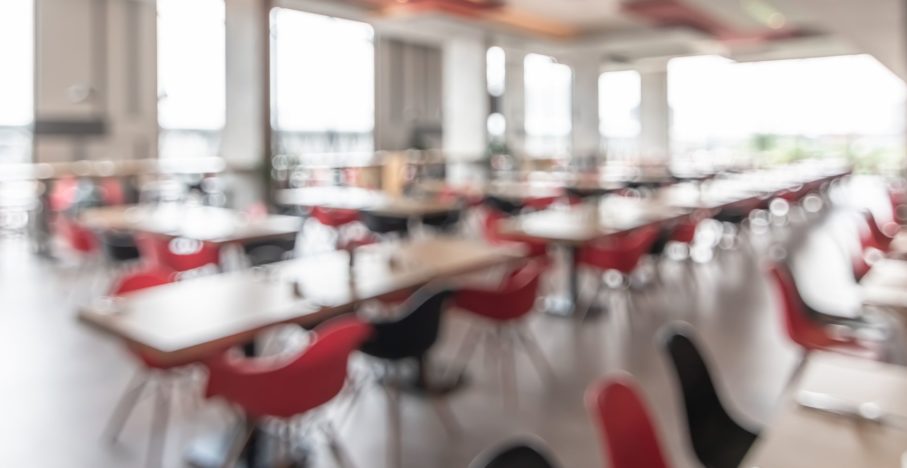COVID-19’s Impacts on Campus Food Service

COVID-19’s Impacts on Campus Food Service
College dining services took a big hit from COVID-19. Students went home, room and board payments were refunded, and people became much more worried about public dining. As colleges and universities reopen their campuses, however, they’ll have no choice but to bring back dining as well – and it’ll be radically different than what students and employees remember. Attorney Andrew T. Miltenberg, Esq., who specializes in student rights, describes what to expect from campus dining going forward.
Dangers Posed by Dining
Self-service is easy and convenient, and it offers students greater freedom in choosing their meals. However, it’s also very risky. Serving utensils are handled by hundreds of people without much opportunity to disinfect. Meanwhile, the food sits open to the air, inviting airborne pathogens from every cough or sneeze.
The wide array of food options that self-service allows is a big draw for college students, but it also has greater potential for contamination. The more options that are available, the more work it takes to ensure all of the different stations stay clean. And, of course, there’s the danger of crowds. College dining halls are busy places, with hundreds or thousands of students, visitors, and staff getting meals at once.
When returning to campus, be ready for big changes. Don’t expect the familiar routine of salad bars, dessert trays, and other self-serve options. Your food choices will also change drastically, with fewer offerings and more limitations.
Reducing Contamination and Upping Social Distancing
To reduce the risk of contamination, campus dining halls will likely rely on one of two options, according to Miltenberg. The first is pre-packaged meals. These kinds of meals are easy to put together in bulk, and the package will protect the food more than traditional self-serve displays.
Alternatively, dining services may offer food pre-orders. A student can order a meal by phone, with an online form, or via a mobile app provided by the dining service. Though a more energy-intensive operation for the campus, it allows students the freedom of more choices with a decreased risk of contamination.
Contamination isn’t the only worry, though. What about the risks associated with big crowds? To assess this danger, college dining will need serious restructuring. Dining spaces during COVID-19 will have limited occupancy, as well as altered seating arrangements, to allow for social distancing.
“Taking meals outside will probably be encouraged when possible,” adds Miltenberg. “Lines for pick-up may also be distanced to prevent too much contact between people waiting for meals.”
Enforcing social distance in the dining halls will probably slow the process down, as fewer students allowed means more time needed to serve everyone. This might lead to problems due to the short lunch breaks allotted to certain students. Many dining services will solve this challenge by rearranging the pick-up area with multiple lines and faster processing practices. Alternatively, class schedules might be adjusted to make longer lunch periods or stagger students and reduce crowds.
Learn More about Your Rights
Campus food services may be cause for concern during the COVID-19 pandemic, which is why your institution will likely do all it can to keep everyone healthy and ease concerns. But when your school isn’t doing enough, remember that it’s important to protect yourself with more than a mask.
“Colleges and universities tend to act like they’re in a bubble,” says Miltenberg. “But they’re not isolated from events in the rest of the world, and they’re not above the law.”
If your academic institution abuses its policies or is careless in the face of the pandemic, contact a student-rights attorney like Andrew T. Miltenberg, Esq., today.





